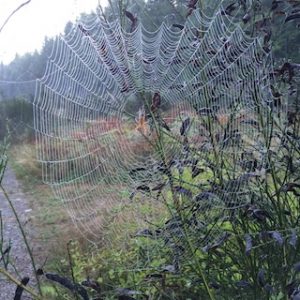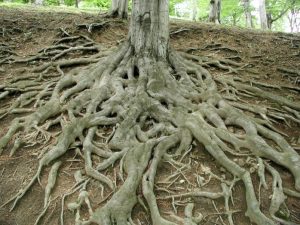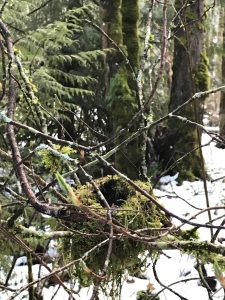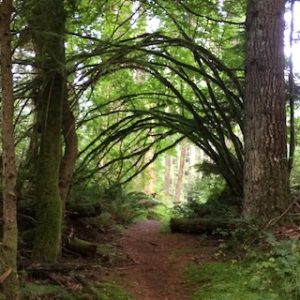 The Columbia City Yoga on-line Moving into Meditation class met this morning. We explored concentration as “just and loving attention.” We aspired to extend this quality of attention from our “grandmother’s heart” and to see ourselves and others with “grandmother’s eyes.”
The Columbia City Yoga on-line Moving into Meditation class met this morning. We explored concentration as “just and loving attention.” We aspired to extend this quality of attention from our “grandmother’s heart” and to see ourselves and others with “grandmother’s eyes.”
We heard from David Brooks’ New York Times essay, How to Save a Sad, Lonely, Angry and Mean Society. David encourages us to see, feel and understand our shared humanity. Part of our salvation is extending “just and loving” attention to one another.
We read from the Roshi Joan Halifax essay, Grandmother’s Heart. She observes that “life is in need of balance and life is in the balance.” Roshi urges us “to find that immoveable center, that plumb line that aims toward gravity, the wise elder within us. Let’s find that strong back that supports our soft front, and let’s find or call out our grandmother’s heart.”
We heard Dane Anthony’s poem Right Here.
Thank you for being here today. This week I’ve been reflecting on how concentration is a devotional practice. It is also a practice of intimacy. By devotion I mean a sort of living by vow, a promise to care. By intimacy I mean getting closer to our experience of being human. When I sit down to practice it is also an act of faith – faith in the equanimity that arises while following the breath. Faith in the grace of wisdom that lives in the heart.
In his New York Times essay, How to Save a Sad, Lonely, Angry and Mean Society, David Brooks wrote:
Your way of perceiving the world becomes your way of being in the world. If your eyes have been trained to see, even just a bit, by the way Leo Tolstoy saw, if your heart can feel as deeply as a K.D. Lang song, if you understand people with as much complexity as Shakespeare did, then you will have enhanced the way you live your life.
 It might serve us to take a few moments to reflect on our way of being in the world. How do we habitually see ourselves and others? Do we allow our hearts to feel deeply? How do we allow for the myriad complexities that constellate into a person?
It might serve us to take a few moments to reflect on our way of being in the world. How do we habitually see ourselves and others? Do we allow our hearts to feel deeply? How do we allow for the myriad complexities that constellate into a person?
David goes on to write:
Attention is a moral act. The key to becoming a better person, Iris Murdoch wrote, is to be able to cast a “just and loving attention” on others. It’s to shed the self-serving way of looking at the world and to see things as they really are.
I don’t think David means this counsel to be about making a “self-improvement project” of ourselves. I hope our mindfulness practice enables us to cast a “just and loving attention” to the world. Concentration can give rise to equanimity – a sort of balance of the heart. Roshi Joan Halifax describes this as having a “grandmother’s heart” and seeing others with “grandmother’s eyes.” She writes:
Equanimity and grandmother’s heart protects us by giving us a base of support for the mass of our lives, and living a long life can offer us this. In the polarized conditions of our current world, it is pretty challenging for most of us to maintain our balance and a good heart in the midst of so much negativity and uncertainty.
I think we could use a big dose of “grandmother’s heart,” a bit more of justice as well as love in our world right now. Life is in need of balance. And life is in the balance. May we find our way . . . before too much more time passes.
 Again we can reflect on what it means to cultivate “grandmother’s heart” and to see others with “grandmother’s eyes.” We can attune to our heart – the heart that is humble and wise with lived experience. This is a beautiful thing we can offer the world: Our devotion, our intimacy, the slowed time of our wholehearted concentration. Today we can practice stepping slowly “to maintain our balance and a good heart.” We can stand still as poet Dane Anthony describes in his poem, Right Here
Again we can reflect on what it means to cultivate “grandmother’s heart” and to see others with “grandmother’s eyes.” We can attune to our heart – the heart that is humble and wise with lived experience. This is a beautiful thing we can offer the world: Our devotion, our intimacy, the slowed time of our wholehearted concentration. Today we can practice stepping slowly “to maintain our balance and a good heart.” We can stand still as poet Dane Anthony describes in his poem, Right Here
Stop moving. Stand in
one place – this place.
Breathe slowly; in, then out. Repeat.
Repeat again. Let your
shoulders sink and relax. Unclench
your jaw; slowly close your eyes.
Listen for your heartbeat; really
listen. Feel it pulse in
your fingertips.
Lessen expectations. Under-do all your
efforts. Requisition the time
for your soul
to catch up. Lean
into the wind; feel it
like a tree and test the ground.
Learn to trust the resilience.
It would be treason
to move quickly – left or right –
from this place. It is alright to be exactly
what you are, who you are, where you are.
Right here, right now.
I invite you to take some time to create a posture in that will “give [you] a base of support for the mass of [your life.].” In wholehearted concentration we are training our eyes to see, training in freeing the heart to feel deeply. Each of us is a field of awareness. We absorb and carry everything we’ve lived. We are exploring the field today with intention today. I invite you to take a few moments to set your heart’s intention.
 As you are ready, you might cultivate embodied presence by moving awareness to sensations, perhaps to those areas of contact with support. Where do you feel grounded and stable? Perhaps connecting with the back body, sit bones, legs and feet. Can you allow sensation to surface and be with it, investigate it for a while?
As you are ready, you might cultivate embodied presence by moving awareness to sensations, perhaps to those areas of contact with support. Where do you feel grounded and stable? Perhaps connecting with the back body, sit bones, legs and feet. Can you allow sensation to surface and be with it, investigate it for a while?
You might feel upper back, arms and hands. What is the nature of the stream you are in right now? There may be areas that are charged with energy. There may be agitation, anticipation. There may be a sense of heaviness, tiredness or torpor. You can notice your chest and breathing sensations. What is the experience of letting your mind know what you are carrying right now?
How am I? Perhaps there are emotions or thoughts present. Pause gives choice. What to follow? How does Body feel before emotion or thought? How does emotion or thought feel in Body? Heart? Mind? You may be meeting inner stillness. You may be flooded with feeling. What parts of the Body are still? What parts are surging? While we hold our intention we can also remember: “It is alright to be exactly what you are, who you are, where you are. Right here, right now.”
The practice invites us to meet what is with Grandmother’s Heart. To see what is with just and loving attention.
 Right here, right now. Is my mind creating stress or alleviating it? Can I widen my attention? Can I connect with breathing slowly or deeply? Is there a place where I can focus that is calming or that feels safe? Sometimes it can be opening closed eyes, taking a sip of water or touching Earth. How can I meet my experience with loving attention? Caring attention allows feeling or thought to be in the field along with whatever self-care that is needed. What kindness, patience or resolve can I offer myself? These qualities can be deeply supportive. There may be other qualities – love, tenderness, equanimity – you wish to cultivate. What is it like to bring wholehearted concentration to these qualities?
Right here, right now. Is my mind creating stress or alleviating it? Can I widen my attention? Can I connect with breathing slowly or deeply? Is there a place where I can focus that is calming or that feels safe? Sometimes it can be opening closed eyes, taking a sip of water or touching Earth. How can I meet my experience with loving attention? Caring attention allows feeling or thought to be in the field along with whatever self-care that is needed. What kindness, patience or resolve can I offer myself? These qualities can be deeply supportive. There may be other qualities – love, tenderness, equanimity – you wish to cultivate. What is it like to bring wholehearted concentration to these qualities?
In connecting with these supportive qualities we might sense their deeper meaning, their transpersonal nature. Each of us is part of a great field of awareness. We all suffer. We all want to be happy. We are all deserving of care. Kindness. Compassion, Sympathetic joy, Equanimity. All these qualities have their roots in care.
 I invite you to give yourself kind attention. Time. Space. Presence. We may sense ourselves and each other resting in the field of awareness. Abiding in the great field, we can know there is caring and being cared for. Take a breath or two to allow yourself to know this.” You can allow any associations you have with caring, being cared for to surface in the field. You can connect with that loving grandmother being inside. In our practice, we accompany one another on the path. Roshi Joan encourages us to:
I invite you to give yourself kind attention. Time. Space. Presence. We may sense ourselves and each other resting in the field of awareness. Abiding in the great field, we can know there is caring and being cared for. Take a breath or two to allow yourself to know this.” You can allow any associations you have with caring, being cared for to surface in the field. You can connect with that loving grandmother being inside. In our practice, we accompany one another on the path. Roshi Joan encourages us to:
. . . find that immoveable center, that plumb line that aims toward gravity, the wise elder within us. Let’s find that strong back that supports our soft front, and let’s find or call out our grandmother’s heart.

